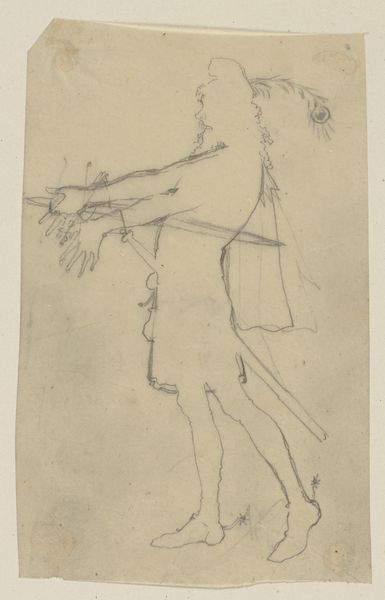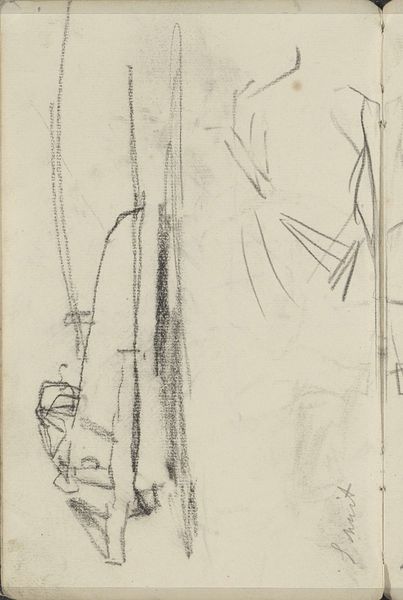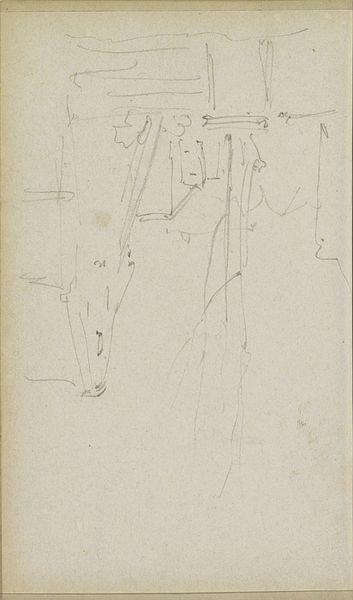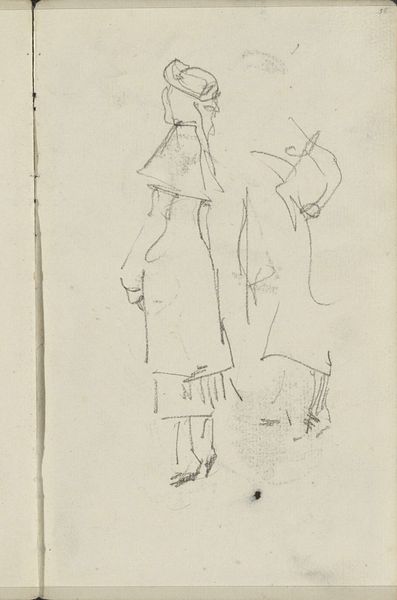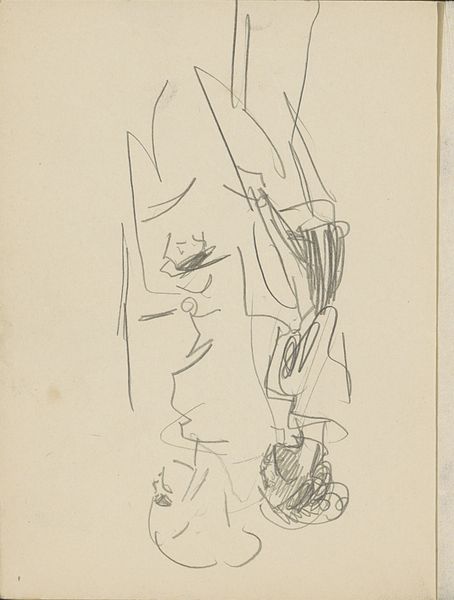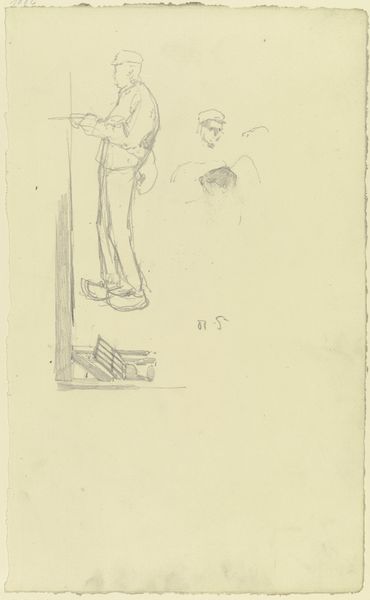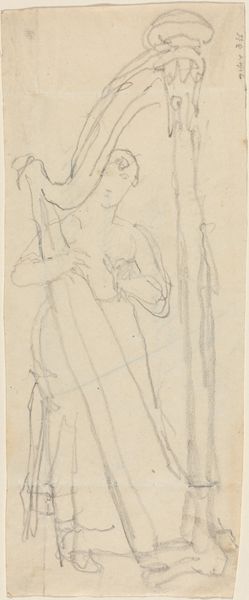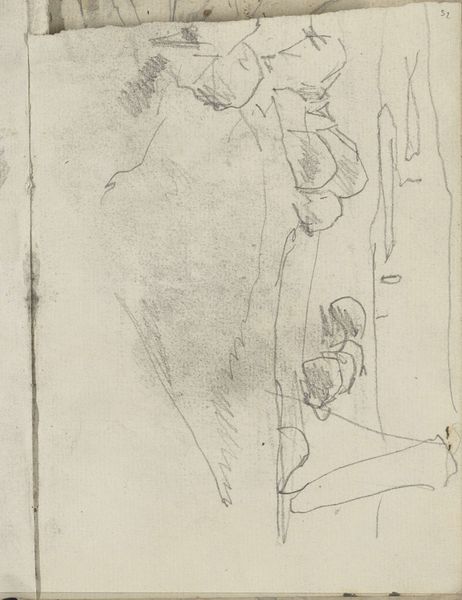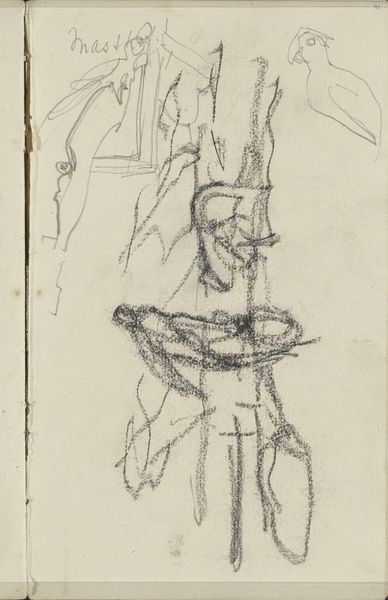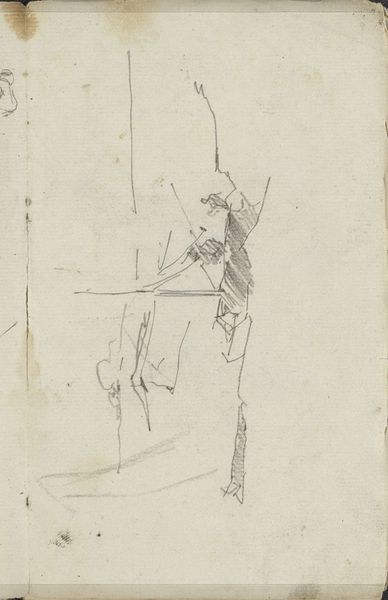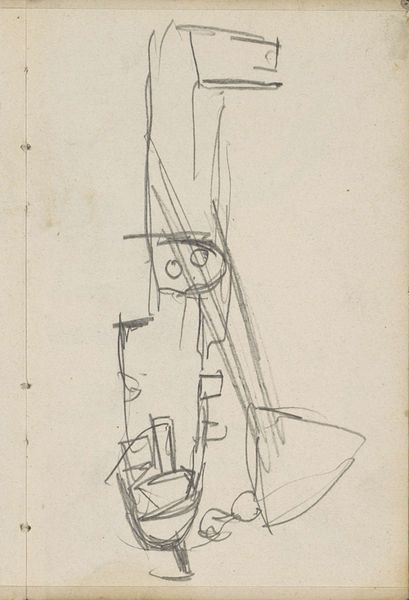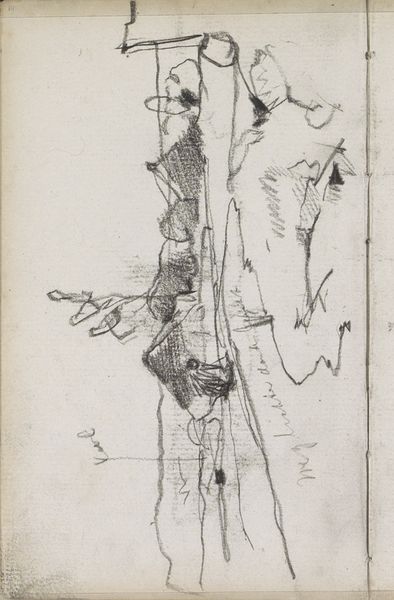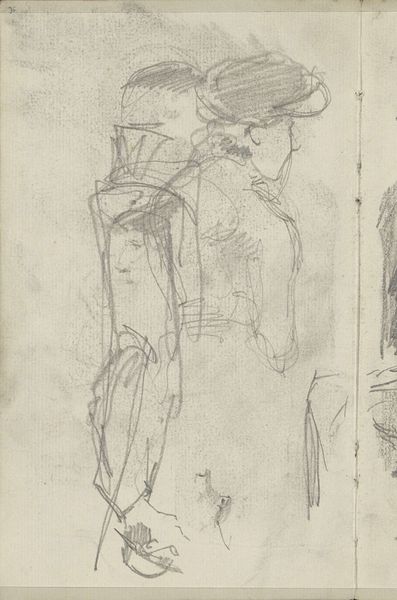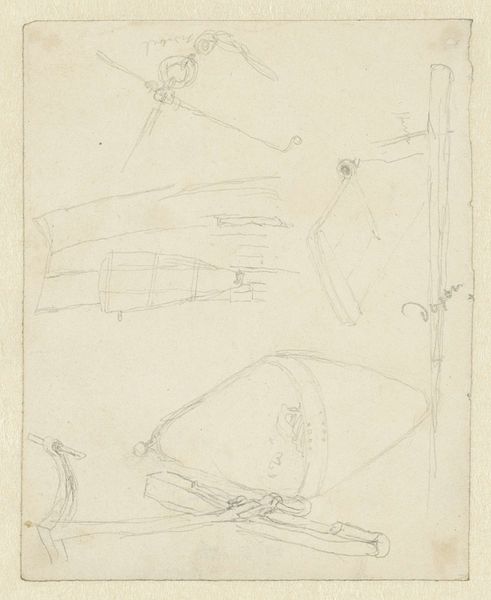
Studieblad met een landschap, een vrouw en een plant Possibly 1883 - 1886
0:00
0:00
georgehendrikbreitner
Rijksmuseum
drawing, paper, pencil
#
drawing
#
comic strip sketch
#
imaginative character sketch
#
quirky sketch
#
landscape
#
figuration
#
paper
#
personal sketchbook
#
idea generation sketch
#
sketchwork
#
pencil
#
line
#
sketchbook drawing
#
storyboard and sketchbook work
#
sketchbook art
#
profile
#
initial sketch
Copyright: Rijks Museum: Open Domain
Editor: So, here we have George Hendrik Breitner's "Studieblad met een landschap, een vrouw en een plant," possibly from 1883-1886. It's a pencil drawing on paper, currently held at the Rijksmuseum. It looks like a page from a sketchbook – very raw and immediate. What catches your eye in this work? Curator: What interests me most is Breitner's process. We see the materiality of the sketch laid bare: pencil on paper. These rapid lines point to an urgency, a need to capture fleeting impressions. We must also remember the socio-economic conditions of artists during this period. Drawings, being relatively inexpensive to produce compared to paintings, democratized art-making and art consumption. Do you see this piece as challenging the traditional boundaries of art? Editor: I see what you mean about challenging boundaries. It's not a polished, finished product, more like a glimpse into the artist's mind at work. Was there a demand for sketches like this, or were they mostly private studies? Curator: That’s the fascinating part, isn't it? Was this intended for public view, or purely for Breitner's exploration? The *paper* itself signals the artist’s potential audience. Finer paper might imply a finished drawing intended for sale or exhibition. Coarser stock is more often connected to the private process. This prompts the viewer to think about labour; the quick and decisive execution also says something about skill acquired from hours of practice, as well as time invested. Editor: That's interesting, considering labor. The sketch feels very immediate, almost effortless. So the actual work is kind of masked. Curator: Exactly! And masking can tell us much about value that contemporary viewers assigned to labor, production and spontaneity. Now what do you make of Breitner using cheaper methods in the rise of Impressionism? Editor: I hadn't really thought of it that way before. So it’s less about the subject and more about *how* it was made and received? Curator: Precisely. Looking at the sketch through this lens reveals interesting avenues of enquiry about the materiality and reception of this art. Editor: Okay, I think I see things differently now, considering the economics of art-making at that time. Thank you! Curator: My pleasure! I also walk away today viewing it differently.
Comments
No comments
Be the first to comment and join the conversation on the ultimate creative platform.
